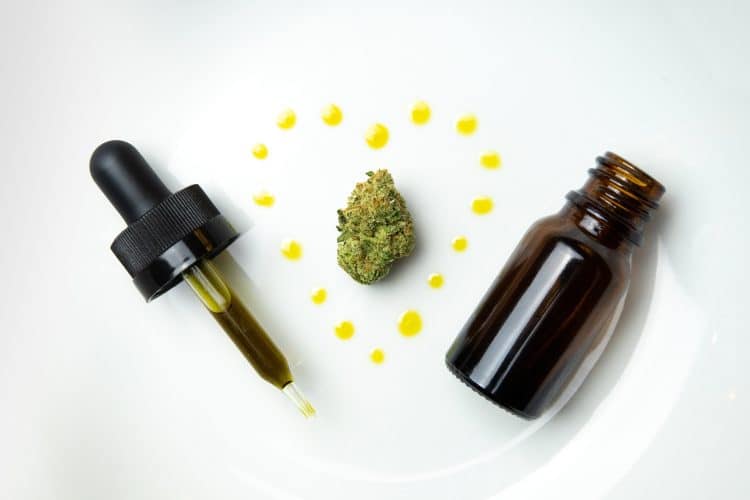Cannabis extraction underpins the development of high-quality cannabis products. Consequently, it has been a controversial issue among scientists and clinicians. Spagyric is an ancient extraction method that is currently being postulated as providing ensemble benefits.
The word spagyric is derived from two Greek terms; spao which means ‘pull’ and ageiro which means ‘bring together.’ Producers generally describe the process of pulling apart the elements of the cannabis plant and later bringing them back together.
Portrait of Paracelsus by Quentin Matsys. Public Domain
In a nutshell, spagyric extraction entails burning waste cannabis biomass to ash to “harvest” minerals from the matter. Once harvested, the minerals are added back to the cannabis extract. It’s claimed that this process provides a cannabis extract that has the whole essence of the plant – in other words, a truly full spectrum extract.
The practice of spagyric extraction is based on ancient alchemy. It is believed that Paracelsus was the first to develop spagyric extraction which he elucidated in his medical treatise Opus Paramirum (“Work Beyond Wonder”). [1] Rather than creating gold, his goal was to create medicine. [2]
Does Science Validate Full Spectrum Benefits?
The unproven theory is that mineral salts from cannabis biomass ash react with cannabinoids in the extract to create cannabinoid salts with synergistic benefits. While no studies have been done to specifically analyze spagyric cannabis tinctures, one 2019 study analyzed spagyric tinctures made from Burch (devil’s claw). [1]
In this study, the chemical profiles of two commercially prepared spagyric tinctures (019 and 014) were analyzed and compared to a commercial non-spagyric tincture (NST), each from the roots of the devil’s claw.
The researchers noted that “the spagyric method allowed us to obtain preparations of good quality based on the presence of marker compounds.” Re-printed below from the open access study is a comparison chart of antioxidant activity; the tinctures were similar with higher inhibitory values compared to acteoside and quercetin, indicating lower antioxidant potential.
Reprinted from: Avato P, Argentieri MP. Quality assessment of commercial spagyric tinctures of Harpagophytum procumbens and their antioxidant properties. Molecules. 2019;24(12):2251. doi:10.3390/molecules24122251. License: CC BY 4.0.
The results also revealed long-term stability (4 years) of the bioactive compounds in the spagyric tinctures. [1]
From this research, it appears that spagyric methods present a unique opportunity, but whether they are superior to conventional full-spectrum extracts is unclear. Relevance to cannabis is even less clear.
Making Spagyric Tinctures
Based on different contemporary manufacturers, the process generally proceeds as follows. Cannabis biomass is first soaked in alcohol for several weeks (or longer). This waiting period allows the tincture to develop fully. After this, the plant matter is taken out and burnt into ash (sometimes at very high temperatures). This ash is often claimed to contain the exact ratio of the plant’s chemical make-up (without data being shown), which would be unexpected because of all the ingredients turned to vapor from pyrolyzing the biomass. Water is added to the ash to make an alkaline mixture. Water soluble compounds are then separated and crystallized. These crystals are reintroduced to the cannabis tincture.
Spagyric tinctures aim to bear the whole essence of the plant; the body, soul, and spirit. The body is made up of the mineral salts from the ash. [2] The soul is the oil of the plant. The spirit is the alcohol used for extraction. [2]
Proponents of spagyric extraction believe that this method offers the blueprint of the cannabis plant as nature intended. The aim is to enhance therapeutic significance through the mechanism of entourage/ensemble effect, although, again, whether these additional molecules obtained from the biomass ash actually result in synergistic effects remains to be proven with data. [3] Spagyrics may also have an appeal for the spiritual use of cannabis. But one mantra reigns supreme here – in science we trust, so please bring data.
Image Source
References
- Avato P, Argentieri MP. Quality assessment of commercial spagyric tinctures of Harpagophytum procumbens and their antioxidant properties. Molecules (Basel, Switzerland). 2019;24(12):2251. Journal Impact Factor: 3.267 Times Cited: 3
- Moritz S. Alchemy and contemporary spagyric medicine: A historical, medical and socio-scientific approach. Interdisciplinary Science Reviews. 2016;41(1):13–27.doi:10.1080/03080188.2016.1171579. Journal Impact Factor: 0.196; Times Cited: 1
- Russo EB. The case for the entourage effect and conventional breeding of clinical cannabis: No “Strain,” no gain. Frontiers in Plant Science. 2019;9:1969. Journal Impact Factor: 4.402; Times Cited: 53













